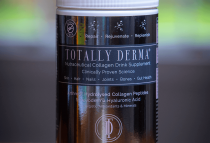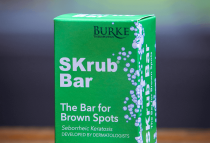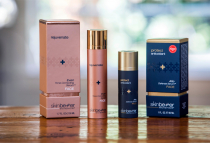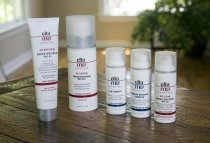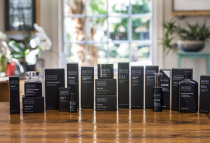
Skin Cancer
My visit with this office was amazing. They were very competent, very nice and very knowledgeable. I will definitely be back...
M.R.
Superb
Skin cancer is the most common form of cancer in the United States. Current estimates are that one in five Americans will be diagnosed with skin cancer in their lifetime. Fortunately, most skin cancers can be cured if detected early, so skin cancer screening and early detection are key. Dermatology San Antonio’s focus is on maintaining the health and integrity of your skin. We want to make sure that you are aware of your skin, and particularly of any changes that could be early warning signs of skin cancer. Let the best dermatologists in San Antonio monitor your skin for any changes and suggest treatment solutions.
The three most common types of skin cancers are:
Melanoma
Melanoma can occur on any skin surface. In men, it’s often found on the skin on the head, on the neck, or between the shoulders and the hips. In women, it’s often found on the skin on the lower legs or between the shoulders and the hips. Melanoma is less common in people with darker skin. When it does develop in people with darker skin, it’s usually found under the fingernails, under the toenails, on the palms of the hands, or on the soles of the feet. Melanoma can be deadly, but is curable with early detection and treatment. It is very important that you check in with a dermatologist about any new or suspicious mole. Most commonly melanoma will appear as a new mole or existing mole that is changing in shape, color or size. Melanomas often are asymmetric in color and shape and have varying shades of pink, brown, black or grey. They tend to change over time. Most start flat and gradually change, but some will arising quickly as a new pink or black -brown bump. Another way to spot melanoma is to look for an “ugly duckling” ie. a mole that looks different than your other moles. Please contact our office if you have a suspicious mole. People who are at higher risk for melanoma are patients who are redheads or have fair skin, have greater than 50 moles, have greater than 6 atypical moles, have a history of using tanning beds, have extensive freckling, have had blistering sunburns in childhood, have had multiple basal cell or squamous cell skin cancers, have a family or personal history of melanoma or a personal history of breast cancer, and those who work outdoors. These types of patients should be seen regularly by a dermatologist.
Basal cell skin cancer
This is the most common form of skin cancer. Basal cell skin cancer (BCC) usually occurs in areas of chronic sun exposure or areas that have been sunburned. The face and trunk are the most common places to find basal cell skin cancer. In people with fair skin, basal cell skin cancer is the most common type of skin cancer. Basal cell skin cancer generally arises as a pink to whitish (pearly) bump that gradually gets bigger. So look for “pimples” or “bug bites” that fail to go away. Basal cells can also scab and bleed with minimal trauma. So, any spot that bleeds when toweling off or on its own needs to be evaluated. Basal cell can also arise as a flat pink patch that does not go away. This is more common on the trunk and arms. Most basal cell skin cancers are pink but they can be pigmented in patients with darker skin and present with a brown to pink color. The good news about basal cell carcinoma is that it is extremely rare for it to spread. It generally stays confined to the skin but can get bigger and locally invasive if neglected. Again early detection is key. Those that should be screened include patients with a history of sunburns, chronic sun exposure, tanning bed use, a family history skin cancer, extensive freckling, fair complexion, or anyone with a suspicious lesion.
Squamous cell skin cancer
Squamous cell skin cancer (SCC) is the second most common form of skin cancer. In people with fair skin, squamous cell skin cancer usually occurs on parts of the skin that have had chronic sun exposure, such as the head, face, ears, arms, hands, chest and neck. In people with dark skin, squamous cell skin cancer is the most common type of skin cancer, and it’s usually found in places that are not in the sun, such as the legs or feet. Unlike basal cell carcinoma, most SCCs have a precursor lesion: an actinic keratosis(AK). We can reduce your risk of developing SCC by treating your AKs. AKs are pink, rough, scaly, crusted, or sensitive areas on the face, scalp, ears, arms, and hands that don’t go away. At Dermatology San Antonio we can offer you a variety of treatments to address these precursor lesions including liquid nitrogen, topical treatments, and light treatment.
For more information, view the BlueLight/PDT page.
SCC can arise gradually from AKs. This will look like a thickened, larger lesion than the other AKs. It can also arise like a BCC; a new pink bump, horn, or flat area that gradually gets bigger, scabs or bleeds. SCC can also arise very quickly as a rapidly growing pink bump. Please contact our office if you have any suspicious lesions. Although SCC generally stays localized to the skin they can rarely spread to other areas of the body so, again, early detection is key. SCC that are higher risk include those on the lip or ear, those within old scars, those arising in immunosuppressed patients, or those that are rapidly growing or painful. Patients who should be screened include those with a history of sunburns, chronic sun exposure, outdoor profession, tanning bed use, a family history skin cancer, extensive freckling, fair complexion, or anyone with a suspicious lesion. In addition, patients who have been treated with radiation therapy, have chronic scarring or lymphedema, or on immunosuppressive medications (like transplant patients) are also at increased risk.
Exposure to ultraviolet light, from the sun and indoor tanning devices, is the most preventable risk factor for skin cancer. That’s why it’s important to know the simple steps that you can take to protect yourself from skin cancer. To effectively guard the skin and detect skin cancer early, dermatologists recommend the following:
- Generously apply a broad spectrum, water-resistant sunscreen with a Sun Protection Factor (SPF) of at least 30 to all exposed skin. On a cloudy day, up to 80 percent of the sun’s rays can pass through the clouds. So, use sunscreen even when cloudy.
- Throw away any old sunscreens. The FDA requires that all sunscreens retain their original strength for at least three years. Some sunscreens include an expiration date. If the sunscreen doesn’t have an expiration date, write the date of purchase on the bottle, that way you’ll know when to throw it out.
- Wear protective clothing, such as a long-sleeved shirt, pants, a wide-brimmed hat and sunglasses.
- Seek shade, especially between 10 a.m. and 4 p.m. when the sun’s rays are strongest.
- Use extra caution near water, snow and sand as they reflect the damaging rays of the sun. Sand reflects 25 percent of the sun’s rays.
- Get vitamin D safely through a healthy diet that may include vitamin supplements. Vitamin D is critical to healthy bones. The amount of vitamin D received from sun exposure is inconsistent. There is no known safe level of unprotected sun exposure.
- Avoid tanning beds. Ultraviolet light from the sun and tanning beds can cause skin cancer and wrinkling. If you want to look tan, consider using a self-tanning product, but continue to use sunscreen with it.
- Check your birthday suit on your birthday. If you notice anything changing, growing, or bleeding on your skin, see a dermatologist. Skin cancer is very treatable when caught early.
Learn more about how to identify changes in your skin that should be examined by a Dermatologist
Take care of your skin, and make sure you discuss any changes with your dermatologist. Beyond prevention, early treatment will help you preserve your skin's integrity. For questions about skin cancer or any other skin issues or irritants, schedule an appointment with one of Dermatology San Antonio’s trusted Dermatologists, 210-615-7171.





